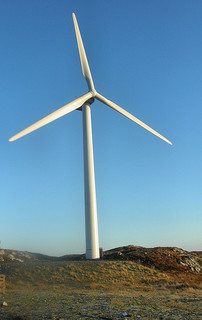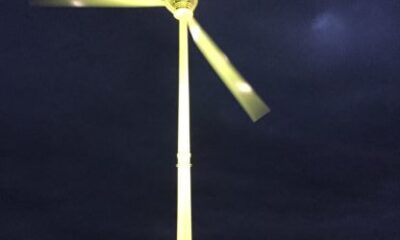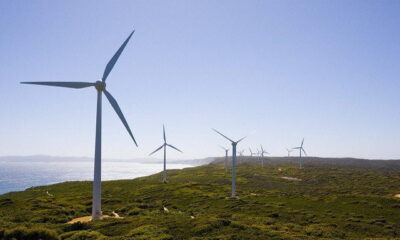

Economy
RSPB and Ecotricity to Build New Wind Turbine in Green Energy Partnership
RSPB and Ecotricity, Britain’s leading green energy company, will install a wind turbine at the nature conservation charity’s headquarters over the next few weeks. Work begins in Sandy, Bedfordshire on Monday 25 January, and the 100 metre tall wind turbine will generate around two million units of green energy every year, equivalent to over half of the electricity the RSPB uses across its 127 UK locations.
With this one wind turbine, Europe’s largest nature conservation charity, in partnership with Ecotricity, will reduce carbon emissions by up to 800 tonnes every year.
Martin Harper, RSPB’s director of conservation, said: “Climate change is the single biggest threat to our planet. This is about our birds and wildlife as well as our way of life. Around the world, and even in the UK, we can already see how these changes are affecting wildlife, the places where they live as well as damage to our homes and disruptions to the economy.
“It is down to everyone to play their part. In the UK, we have the potential to generate a significant portion, if not all, of our electricity from sustainable sources. This will take time and it will take investment. So I am proud to say the RSPB continues to back words with actions to show we are serious about tackling the threat of climate change with our biggest single renewable energy project yet.”
The project is a partnership between the RSPB and Ecotricity, Britain’s leading green energy company, in which Ecotricity finances and installs the turbine that produces affordable green energy for the RSPB.
Ecotricity pioneered this unique approach fifteen years ago, and its wind turbines currently power operations for Ford, Michelin, Sainsbury’s and B&Q.
Dale Vince, Ecotricity founder, said: “This is a 21st century approach to making energy in Britain – it’s about working with our customers to make energy where they live and work, and sharing the benefits with them.
“Green energy puts power in the hands of the people – the technology allows us to democratise and decentralise energy in Britain.
“That’s exactly what this partnership does; it allows us to work together with our customers to make green energy where they need it and to share the benefits – the complete opposite of the old top down approach.
“Green energy is also a strong economic and an environmental choice – it’s about jobs and the new industrial revolution, about building a truly sustainable economy in Britain.”
The new turbine is the latest development in a growing portfolio of RSPB projects that are making the charity more energy efficient and greener. The RSPB has aligned its carbon emissions reduction ambitions with the 2008 Climate Change Act, which includes a legal duty for 80% reduction of greenhouse gas emission by 2050.
To achieve this, since 2007, the RSPB has set out a target to reduce its carbon emissions by 3% per person per year to 2020 as the first phase towards this ambition. Over the last few years, the RSPB has invested in energy conservation, photovoltaic (PV) roof systems, wind power, solar thermal collectors, ground source heat pumps, biomass generators and more to achieve this target.
Ecotricity, in partnership with the RSPB, completed three years of detailed ecological and environmental research to confirm that the location is a suitable site for a wind turbine before presenting final plans to the local Planning Authority.
Martin Harper added: “Last year world leaders came together, recognising the impact of climate change and the need to act now. We now have a global agreement to hold the Earth’s average temperature to well below 2 degrees C. Renewable energy will play an important part in this.
“Using wind energy is a proven and reliable technology that reduces greenhouse gas emissions. But turbines must be located where they are sympathetic to our natural environment.
“The RSPB has been involved in over 1,500 wind farm applications, offering our expertise and advice to local authorities, land owners and energy companies. This ensures that local nesting activity, migratory patterns and flight paths are all taken into account when planning a new wind turbine.
“I hope that our wind turbine will inspire others to take action and join us in using renewable energy to power our country.”


 Environment10 months ago
Environment10 months agoAre Polymer Banknotes: an Eco-Friendly Trend or a Groundswell?

 Environment12 months ago
Environment12 months agoEco-Friendly Home Improvements: Top 7 Upgrades for 2025

 Features9 months ago
Features9 months agoEco-Friendly Cryptocurrencies: Sustainable Investment Choices

 Features10 months ago
Features10 months agoEco-Friendly Crypto Traders Must Find the Right Exchange



























